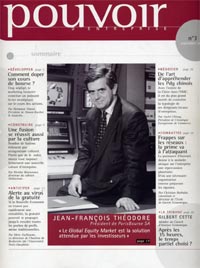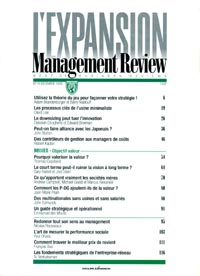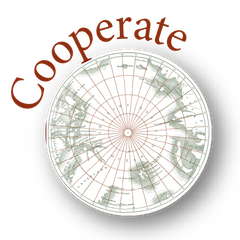Pouvoir d'entreprise - september 2000

Mergers: The corporate culture dilemma
By Nicolas Rousseaux
Many mergers fail because of cultural clashes. Rather than passively accepting such incompatibilities, it is far better firmly to impose a new corporate culture on the created entity.
On 10 July 1998, just one month after the announced merger between Compaq and Digital, Eckhard Pfeiffer, Compaq’s charismatic CEO, sends an email to all his teams: “When companies merge, developing a common culture focused on the future is a critical element for success. Creating a strong culture will be no easy task”.
Nine months later, on 19 April 1999, during a crisis weekend, Eckhard Pfeiffer tendered his resignation.
The collapse in Compaq’s share value in the first quarter of 1999 (a fall of 50 percent between January and March) precipitated his fall. In explaining to Wall Street analysts their late announcement of poor results for this fateful quarter, the company’s top management pointed an accusing finger at “the lack of compatibility between Compaq’s and Digital’s reporting systems”. Quite symbolic.
Meanwhile, 1,400 of the 1,900 employees at Digital France (74 percent of the workforce) had refused the contractual conditions of the merger and opted to take advantage of the redundancy package offered by Compaq. Eckhard Pfeiffer, who had succeeded in increasing the Texan company’s turnover by a factor of 10 in eight years to reach $31 billion, had failed to achieve its merger. Once again, cultural incompatibility had reared its ugly head.
Victims of cultural shock
Cultural shock following a corporate merger has many victims in the headquarters of large groups, even when the merger appears to be working.
The tricolor telecoms Polytechnicians at France Telecom found themselves up against the mavericks at Orange, led by a hippie capitalist feng shui devotee.”
Just think of the Chrysler boss’s hand to hand with his counterpart at Mercedes-Benz. The taciturn Robert Eaton, holed up in his Detroit citadel, finally succumbed to the onslaught of Jurgen Schremp’s light brigades. It was the Germans who gradually took over the reins of the new entity by taking advantage of their more opportunistic culture. Or take Luc Vandervelde, Number 2 at Promedès, appointed by Daniel Bernard to lead the Carrefour-Promedès merger operation, who, finding himself increasingly isolated, threw in the towel after eight months to join Marks & Spencer. Culture, once again.
Paribas stars abandon the BNP ship? Culture, yet again. Alcan-Péchiney-Algroup’s suicidal overbidding with the European Commission? Culture, I tell you! Even the popular press has understood the cultural condition of companies: France Telecom buys Orange in Great Britain and there you have it, the very conservative École Polytechnique telecoms graduates head to head with Her Majesty’s “mavericks”, led by Hans Snook, a hippie capitalist feng shui devotee, one of whose claims to fame was to have been imprisoned by the Chinese for having made an unauthorized visit to the tomb of Confucius. A €40.3 billion operation’s profitability will thus be measured by the yardstick of the cultural power relationship between the two groups.
Conceptual vagueness and lack of references
The problem is that, through over-use, the term “corporate culture” has become a catch-all encompassing all the reasons why even the best planned mergers fail.
It is true that there is some vagueness about these themes, which explains the current conceptual disarray. Corporate sociologists, ethnologists, psychologists, statisticians and Organizational Development specialists all have their own pet therories.
However, two major schools of thought can be distinguished: the “organics”, for whom culture is the intersection of different data/givens (essentially, historical, social, national and psychological) that constitute the context for action, a sort of heritage to which one has to adapt in order not to be devoured; and the “constructivists”, who, by contrast, claim that culture is the sum total of convictions carried into action, which can be directed and enriched. In the first case, one is passive; in the second, voluntary action is primary.
But even with this approach, the techniques of cultural architecture are not well known. Companies that “know” how to create a culture often do so by using their own alchemy, which is not made systematic and is often confused with the “genius” of the founder or of a significant group (Jobs and Wozniak at Apple, Marcel Paul for EDF, Polytechnicians at the SNCF). Those very rare cases that have systematized their approach have made of this skill – built on experience over time – a veritable industrial secret. Look at Michelin.
Corporate culture is so essential that… there is no-one with direct responsibility for it. Alongside the Chairman and the CEO, there is typically an HR Director, a Communications Director, a Director of AF… No high-level manager is specifically in charge of cultural levers.
It is such a context that explains why management is so often caught short by the cultural undertow effects provoked by a merger, or by other significant strategic shocks: alliances, partnerships, restructuring (reorganization), divisionalization, privatization, market deregulation….
“By laying the weaknesses of the two protagonists in a merger alongside each other, it is possible to anticipate potential conflicts caused by: conspiracies of silence, reluctance to share information, power struggles…”
Rule #1: Adopt a voluntarist attitude…
The operational mode is quite straightforward and rests on three conditions.
The most important is to give unhesitating preference to the “constructivist” analysis of corporate culture. In other words, consider that a culture is constucted according to the voluntary action of its leaders. It is therefore necessary to forget the vision of the Levy-Strausses of the economic world that concentrate on “tribes” (a fashionable concept totally bereft of operational effectiveness), which maintains that corporate culture results from an organization’s lethargy.
A vision should on the contrary be simple, pragmatic and voluntary. Corporate culture is defined as the totality of conditions for action in a company. These conditions are the product of a conviction (not of a coercion) which, rather than being part of a company’s formal dimension (ie, its strategy, structure, processes), are lodged in its informal dimension.
This informal dimension comprises three elements:
● The leadership traits of its managers, ie, their ability to drive forward, their will and their vision;
● Symbols, ie, signs, appearances, explicit values, habits;
● The socialization system, whether this is individual behavior, relationships between groups, towards external partners and customers…
All three elements need to be taken into account when determining the character of the new organization that will be created from the merger that is under way.
Which is precisely what Eckhard Pfeiffer was not able to do. Compaq’s ex-CEO considered corporate culture as merely a lever for communication, expressed in the best possible language: “In taking advantage of our past and present strengths and considering what we want to become, our trans-functional team has developed a new set of values destined to form our common shared platform”.
… and control a huge potential for violence
When a merger is under way, it is unrealistic to imagine that the two actors are going to couple under their own steam, brought together by the sheer irrepresssible force of love. Quite the contrary, the two protagonists face to face take a malicious delight in eyeing each other up. It is by very quickly laying each organization’s weaknesses alongside one another that it is possible to detect and anticipate the location, level and type of potential conflicts between the two. Such conflicts can have any number of causes: misunderstandings, reluctance to share information, conspiracies of silence, imbalance between discussion of profitability (cost reduction) and discussion of motivation (together, we can achieve more), delays in appointing an executive board, contracts lost through latent uncertainty, lack of responsibility, etc. ….
A merger between two entities contains an enormous potential for violence at all levels of the corporate hierarchy. This is because a merger calls into question the history, the heritage, the stability, the workplace, the job one has, the future of the brand with which everyone identifies, etc. …. This profound, brutal, immediate questioning of a company’s “fundamentals” is of concern to all personnel in the two entities, which lose their distinctiveness in the act of merging.
Rule #2: Make audit a driving force for the merger
The second rule is to avoid confusing the diagnosis of corporate culture with its normalization. The role of a expert consultant in an “audit”-type project is to be inspired by the rules in place in the Art School rather than those followed by a radiology specialist. At times of transition, managers need to look at their organizations as individual entities and independently from their business, as human artefacts that can be transformed. Better to be a Velasquez than a Doctor Schweitzer!
Audit is a magical moment, when the intuition of possible change can “overturn everything”, to paraphrase one bank CEO. During a recent merger, he experienced the feedback from the cultural audit, in particular the measure of the power relationship between the company’s two dimensions – formal and informal – as the realization of a possible reverse merger scenario (in which the target company takes power in the acquiring company). Which is what later proved to be the case.
The audit thus tends to reveal the political situation in the company (discovery of assumptions) and a tool for taking control of its destiny. The difference between the medical auditor and the artistic auditor is that the former limits himself to determining the options while the latter brings a vision (the dream of soldiers in whom Napoleon drew up his victories).
“Managers need to look at their organizations as individual entities and independently from their business, as human artefacts that can be transformed.”
This second, evidently more effective approach enables, for example, a management team that faces an internal cultural transformation challenge provoked by the merger of two entities to be brought into alignment. Or again, before the launch of a merger, it enables a phase of due diligence to be undertaken on different sensitive issues: identifying the entities’ respective performance levers; measuring the success track record in each one; carrying out a motivation/stimulation check-up in each; determining the match between the two entities’ characteristics and those of current or future partners; identifying inconsistencies between the internal/external communication styles of the two; measuring the leadership positioning and influence in each. All of this is a far cry from the classical tools typically used for assessing the social climate.
Rule #3: Define a cultural reference model
The third rule for preventing a merger from coming to grief on cultural problems is to put in place as soon as possible some structural points of refence within the new organization. The most important of these is the corporate culture model to which the newly constituted group will refer. This model determines, at the heart of the new entity: the action drivers, constraining factors, the desired culture (without categorizing it), and the foundation of a medium- and long-term policy that is unaffected by day-to-day operational constraints.
Using this approach, a young four-year-old start-up was able to move from an oral to a written culture, in an effort to stabilize its growth and prepare for its stock-market flotation, without reducing its dynamism or stifling its creativity.
In the same way, Claude Bébéar, for example, was able to develop the Axa Group by constructing a cultural model based on his integrating expertise. The creation of a company university in Bordeaux and a company-wide Axa language, well before the acquisition of Compagnie du Midi, further contributed to the insurance group’s continuing success.
Not without good reason, the Schneider Group chose to take the opposite route, preferring to retain the brands of each of the companies it acquired over time (Télémecanique, Merlin Gérin, Square D, Modicon). In his own way, Didier Pineau-Valencienne learned the lessons of the psychodrama he lived through during the acquisition of Télémecanique, by deciding not to prevent employees from declaring their allegiance to one or other of the group’s brands. There again, the merit of the scheme was the clarity of the model chosen.
Companies that ‘know’ how to create a culture often do so by using their own alchemy, which is not made systematic and is often confused with the ‘genius’ of the founder or of a significant group.”
However, the corporate cultural model is not the only indispensible structural reference in the context of a merger. Another essential ingredient is to put in place, at the heart of the organization and at the very highest level, close to the Chairman or CEO, a structure responsible for cultural problems over time (and not merely at the time of the merger). French corporate groups have not yet reached this level of cultural sophistication. Even those companies that are known to have integrated the cultural dimension into their strategies, such as Carrefour, Accor, Axa, to name but a few, have not yet gone so far as to include a Cultural Director in their executive boards. But all that may be about to change in the very near future.
Executive summary
- Corporate culture is all things to all people. Yet, while everyone today agrees that it constitutes a key ingredient in a strategy’s success or failure, especially in mergers, few actually use it as a lever for action.
- There are three reasons for this confused situation: a plethora of more or less scientific theories on the subject; company experiences or examples that are the result more of alchemy than of architecture ; and a lack of cultural decision-making consistency at the top of the organization.
- Corporate culture can, however, constitute a powerful and unique competitive advantage. But only if its influence is carefully defined (all the conditions of action that come from conviction: leadership, symbols and socialization system) and a careful balance is maintained in the power relationship between an organization’s visible and invisible dimensions (notably its “political” situation).
- The final stage involves determining precisely what references are necessary for creating a cultural model adapted to the structure that results from the merger. Determining the two companies’ contributions hinges on the choice of engines for action and their validation, as well as on the way in which the basis for corporate policy is characterized, expressed and codified.
[Curriculum vitae/Biodata/Biodonnées]
NICOLAS ROUSSEAUX is the founder of Mediation, an international consulting firm that assists managers to work on their companies’ cultures in order to prepare or implement major strategic movements. Created in 1996, Mediation is one of the first firms to have put in place implementation methods based on an active acknowledgement of corporate culture.
M Rousseaux is author of two books on the corporate world: Management Meanings, an essay on the future of managers in Europe (Éditions Village Mondial, 1996) and Enterprise Worship (Éditions Autrement, 1988), a multidisciplinary analysis of the growing importance of corporate culture. Holding a Diploma in information and communication science, he has lived and worked in some 50 countries.










